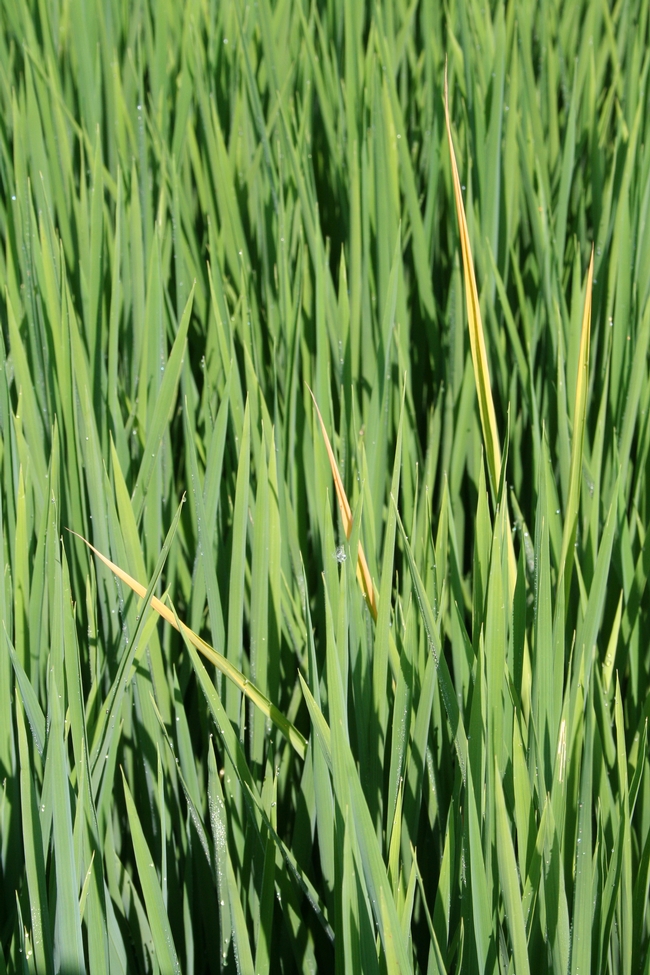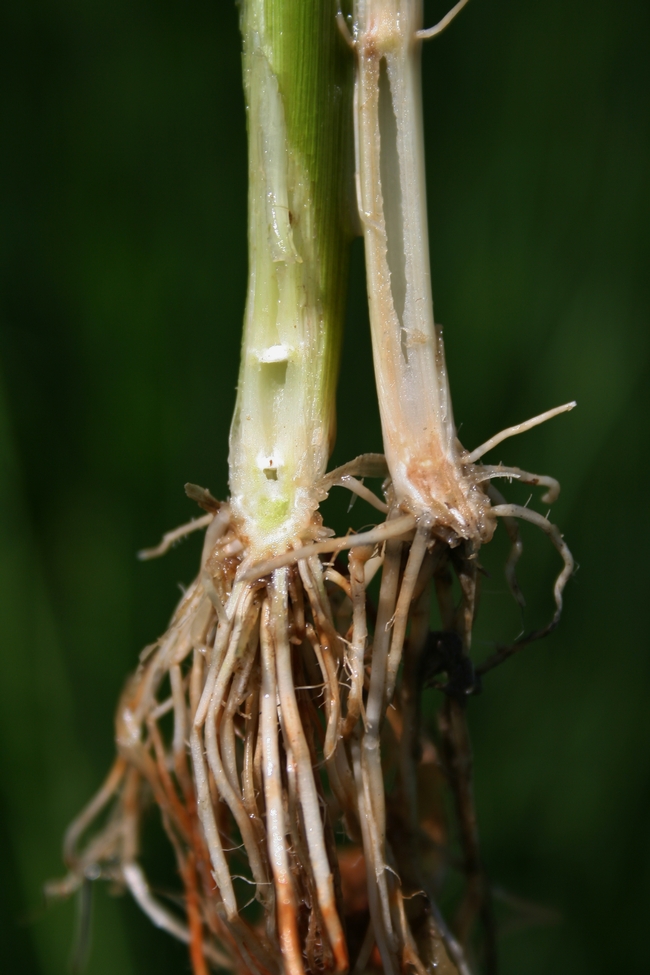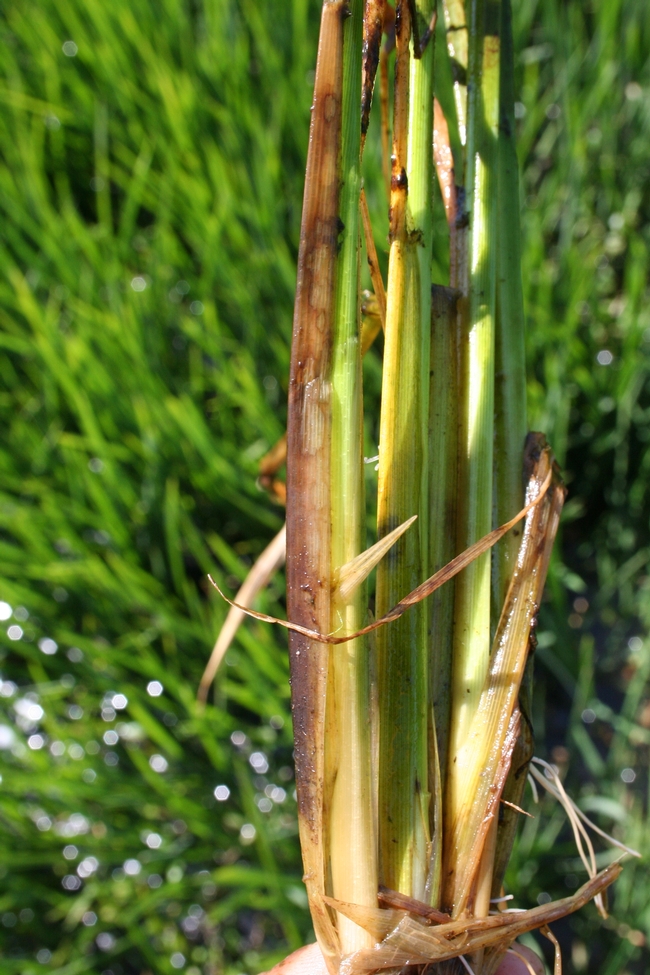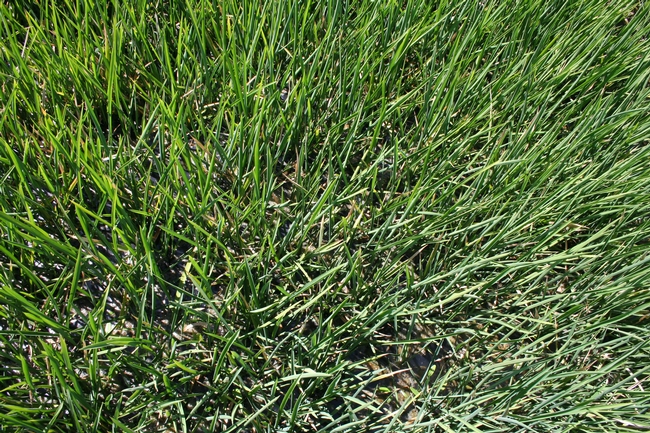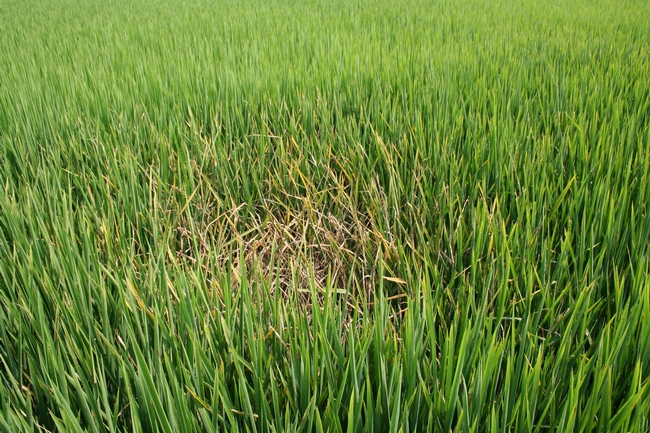There are a couple of interesting issues I have noticed while looking at fields, mostly in the northern part of the valley. One is bakanae. Bakanae is a seed borne disease that is managed by soaking the seed in sodium hypochlorite or bleach. Levels are very low and is not going to affect yield. Affected plants are taller than the rest, tend to be lighter green and chlorotic. The tell sign that the problem is bakanae is the rotting of the crown. Affected plants will die before producing a panicle or will produce a blanked panicle.
|
Bakanae affected plant |
Healthy and rotted crown caused by bakanae |
Another interesting issue I found is young plants affected by aggregate sheath spot. Usually I don't see this disease being severe this early, but in this field a large patch seemed affected.
|
Young plant affected by aggregate sheath spot |
Area affected by aggregate sheath spot. Notice the yellow leaves near the water. |
I have heard blast is present in the Willows and Maxwell areas, but I have not seen any yet. Usually, a tell sign of leaf blast is burned circular areas near headlands, where N overlaps are. But make sure to inspect closely. In one field, the dead circles were not caused by blast, but most likely by rats or muskrats that had cut the rice and created a sort of nest.
|
Burned area caused by blast |
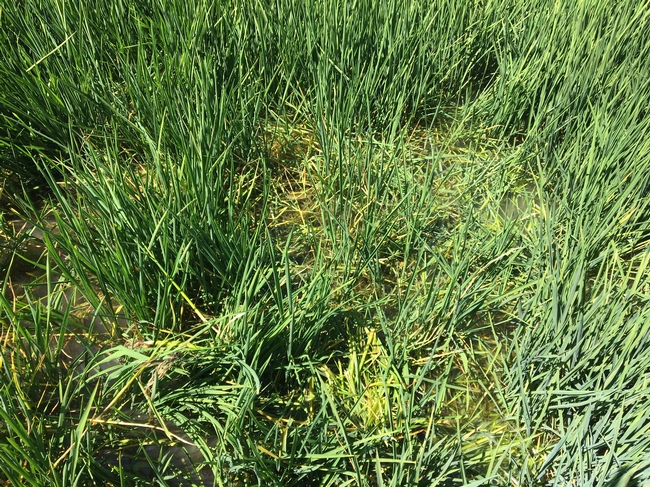 |
